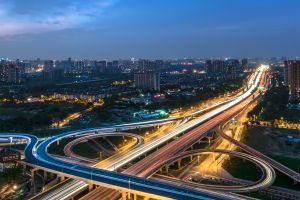The city of Valencia, located in southeastern Spain, is known as a jewel on the western coast of the Mediterranean Sea and is the third largest city in Spain.
For more than two thousand years, Valencia has been nestled on the shores of the silent Mediterranean Sea.
Few cities can blend the heritage sites of the distant past, dating back to 138 AD, with the latest and pioneering modern architecture built in the new millennium in such perfect harmony as Valencia.
Valencia differs from most Spanish cities in that it is both classical and modern: in addition to its historic old city, it has a very avant-garde new city of art and science (Ciudad de las Artes y las Ciencias).
The Ciudad de las Artes y las Ciencias was built in 1996 and covers an area of 350,000 square meters, a master complex consisting of a planetarium, an opera house, an aquarium, a museum, a botanical garden, and other functions.
It is one of the largest centers of scientific and cultural communication in Europe and is listed as one of the twelve treasures of Spain.
It is thanks to it that many people know the city of Valencia.
In the early 1990s, after visiting the Cité des Sciences et de l'Industrie de Paris, the President of the Autonomous Community of Valencia decided to reshape the city by creating a futuristic City of Sciences for Valencia.
The initial proposal was developed by a team of 56 experts from the University of Valencia, who designed the "City of Science and Communication" with a 370-meter-high communication tower as its core.
However, the public rejected the proposal due to the high investment and uncertainty of its value.
In 1991, Santiago Calatrava, a native Spanish architect, again designed the whole complex, which is now full of futuristic buildings.
These buildings, which are both powerful and beautiful, have become architectural landmarks of the Spanish modernist style.
Although the construction of the entire complex cost 900 million euros, it quickly became the most popular attraction in the city after its completion, effectively boosting the city's tourism and real estate industries.
The city's futuristic spatial image has also continued to attract popular science fiction movies and TV shows such as "Tomorrowland" and "Westworld" to set here, becoming a strong endorsement for the city's image.
According to the data, the City of Arts and Sciences brings an average of 113 million euros in revenue to Valencia every year and creates about 3,500 jobs, which can be said to reproduce the "Bilbao effect" of the Guggenheim Bilbao.
The five modern venues of the New City of Science and Technology, including the Art Museum, the Ocean Museum, the Art Museum, the Science Museum, and the Cinema Museum, form the landmark of the city.
The City of Arts and Sciences, with its astonishing beauty, covers 350,000 square meters is one of the outstanding examples of modern architecture, and has become one of the most popular tourist attractions in Spain.


